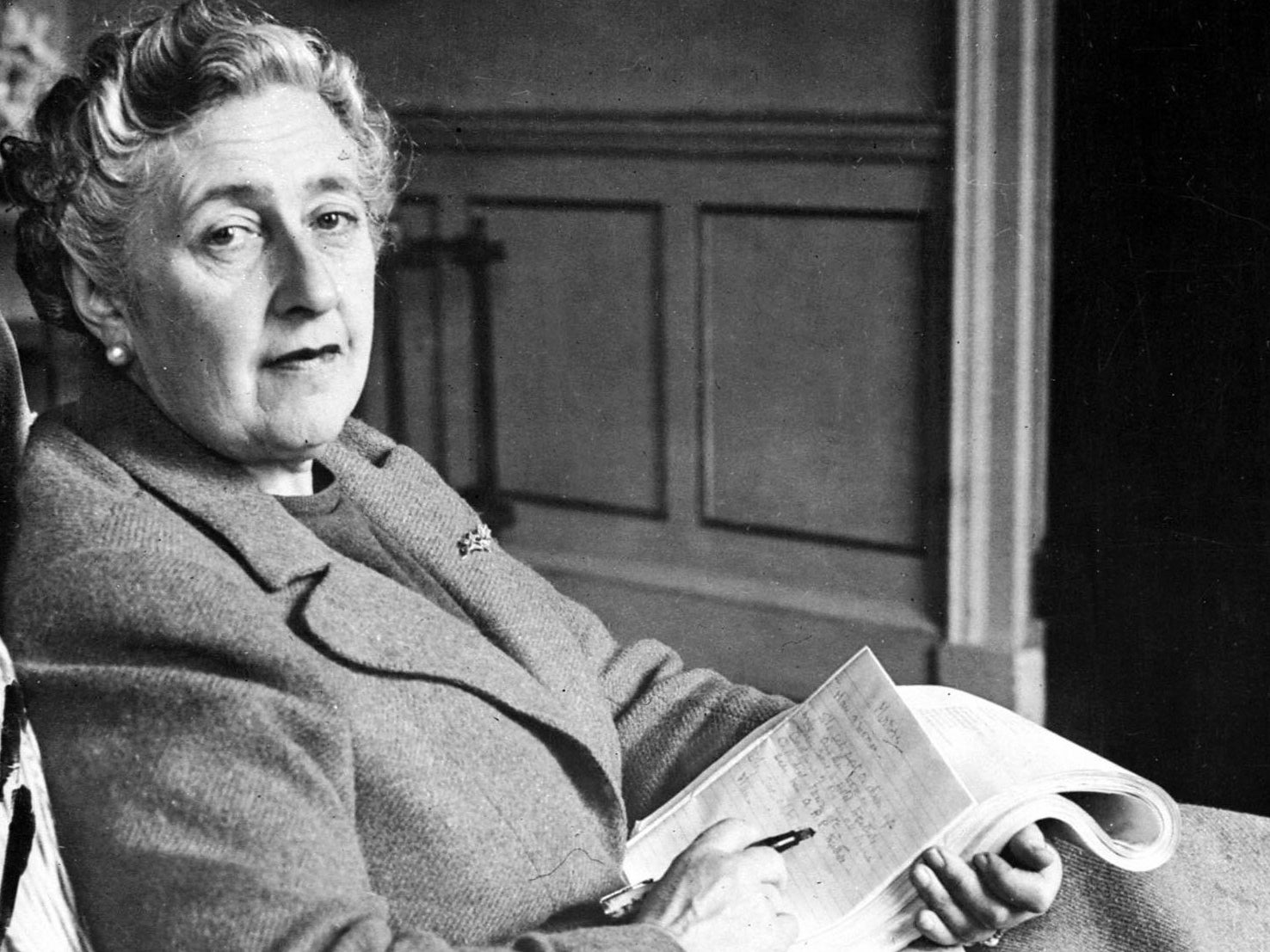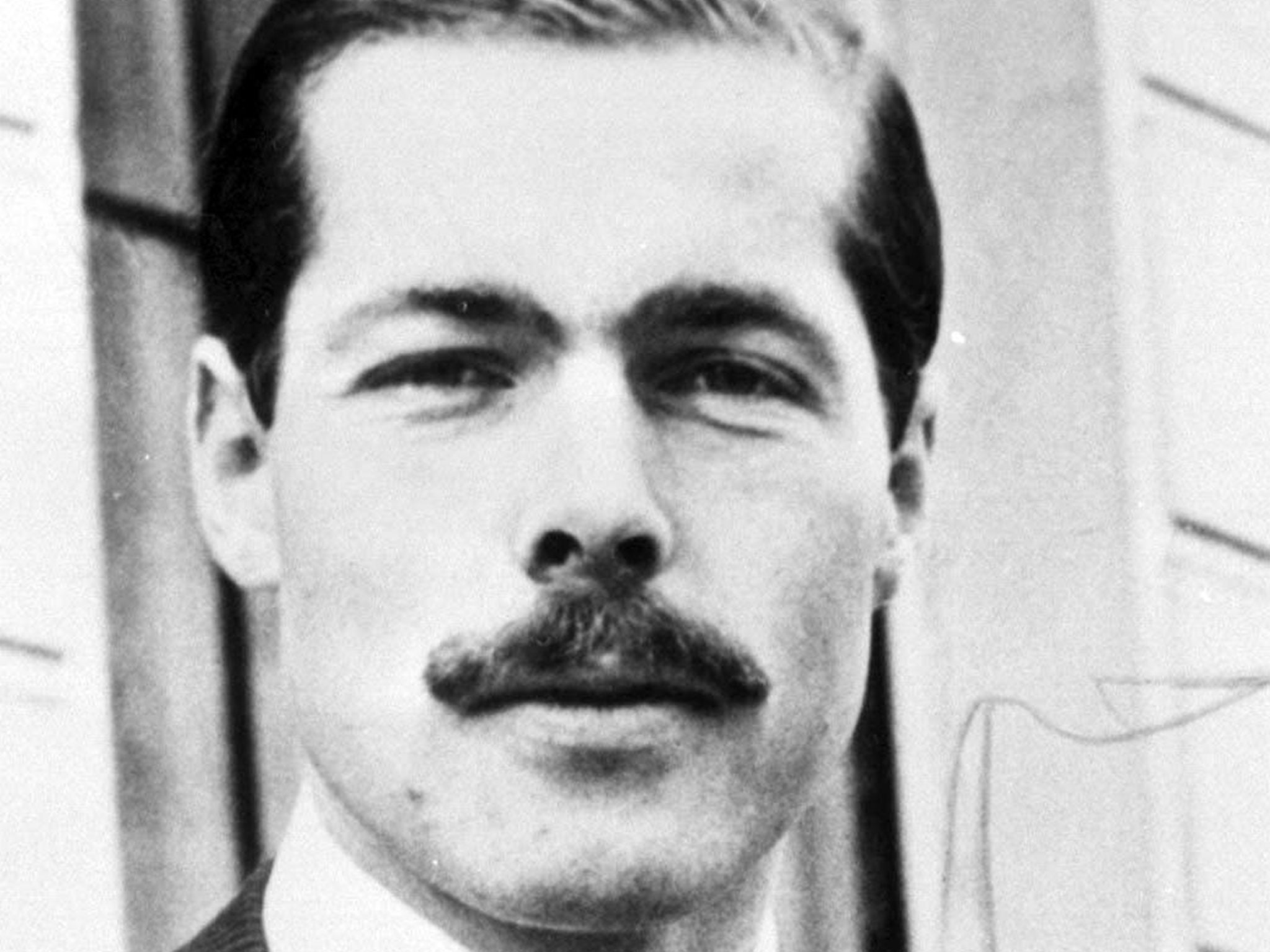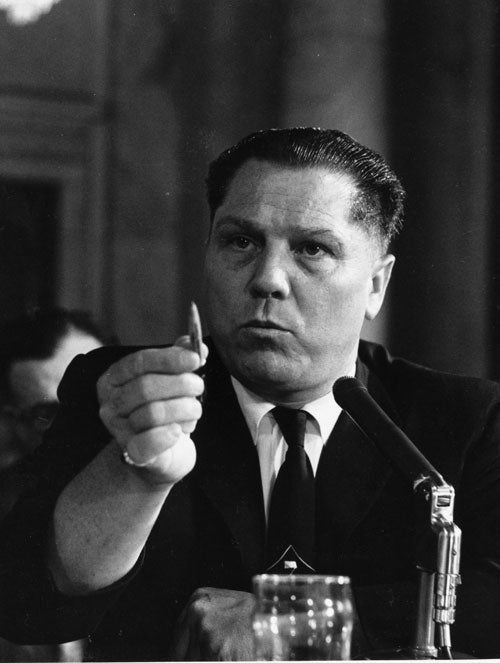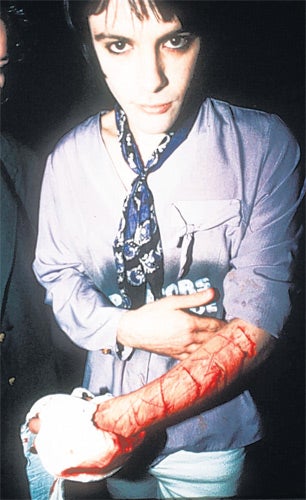Vanishing act: The mystery of famous and not-so-famous missing people
Celebrated author Agatha Christie disappeared for 11 days on this day in 1926, but she’s not the only famous person (or animal) to go missing. Where are they now, wonders David Barnett

Your support helps us to tell the story
From reproductive rights to climate change to Big Tech, The Independent is on the ground when the story is developing. Whether it's investigating the financials of Elon Musk's pro-Trump PAC or producing our latest documentary, 'The A Word', which shines a light on the American women fighting for reproductive rights, we know how important it is to parse out the facts from the messaging.
At such a critical moment in US history, we need reporters on the ground. Your donation allows us to keep sending journalists to speak to both sides of the story.
The Independent is trusted by Americans across the entire political spectrum. And unlike many other quality news outlets, we choose not to lock Americans out of our reporting and analysis with paywalls. We believe quality journalism should be available to everyone, paid for by those who can afford it.
Your support makes all the difference.Had Agatha Christie chiefly been a writer of, say, romance novels or social comedies, her movements on Friday 3 December 1926 might not have attracted so much international attention.
But Christie was, of course, a purveyor of mysteries, of enigmas, of puzzling crimes, and her apparent disappearance into thin air was something straight out of one of her books. “The Mysterious Affair at Newlands Corner”, perhaps, which was the local beauty spot where Christie abandoned her Morris Cowley car along with her clothes and driving licence.
Christie was a household name by then, her sixth book The Murder of Roger Ackroyd having recently been published, and her disappearance made front page news. The Daily Mirror devoted a picture splash to the story with the headline “Mystery of Woman Novelist’s Disappearance”.
There was a nationwide hunt for her, and fellow mystery writers Dorothy L Sayers and Arthur Conan Doyle joined in the search. Suspicion fell on the author’s husband, Colonel Archie Christie, who was having an affair with a younger woman, Nancy Neele, and there was talk that he’d done away with his wife, then aged 36.
The mystery gripped the nation for 11 days, until a local musician in the North Yorkshire spa town of Harrogate called Bob Tappin recognised Christie at the town’s Swan Hotel, where she had checked in under the name Teresa Neele – using the surname of her husband’s mistress, and claiming to be from Cape Town, South Africa.

The reason for her disappearance was never fully explained, and she never spoke about it, save for commenting once that “For 24 hours I wandered in a dream, and then found myself in Harrogate as a well-contented and perfectly happy woman who believed she had just come from South Africa.”
That was a theory extrapolated on by Christie’s biographer Andrew Norman who, in a book released in 2006, said he believed she was indeed not herself for those 11 days, and was in fact suffering a rare mental condition known as a “fugue state”, which conferred upon her a sort of amnesia which left her with no knowledge of what she had been doing for the period that she was missing.
Christie’s lost 11 days represent one of those mysteries we love to probe, but really don’t want a full answer to, as the puzzle is a delicious one in of itself. It’s passed into literary legend, and the Swan Hotel in Harrogate is today the hub of the town’s annual crime-writing festival every summer.
It seems that we love a good celebrity conundrum, and always have. There’s something of a thrill to think of a person, especially a well-known figure, simply disappearing, as if into thin air. In these days of blanket surveillance and constantly connected lives it’s all the more remarkable when someone famous dips completely under the radar, but it’s something that’s fascinated us for millennia.
As far back as 71BC, in fact, when Spartacus led a slave revolt against the Roman oppressors. It’s always been assumed that Spartacus died in the climactic battle against the Romans, yet his body was never found and no one is really sure what happened to him. Similarly with Boudica, queen of the Iceni who fought back against the Roman occupation of Britain, less than a century after Spartacus. She is said to have taken poison after being defeated, but there is no record of what happened to her body if that was indeed the case.
But it’s the modern disappearances that really fascinate, and there is no greater epitome of the idea of the missing celebrity than Lord Lucan. Richard John Bingham, the 7th Earl of Lucan, to give him his full title, dropped out of sight on 7 November 1974, at the age of 39. Lord Lucan was dashing and a bit of a playboy; he loved fast cars, especially his beloved Aston Martin, and raced speedboats. He was a professional gambler and apparently once considered for the role of Ian Fleming’s superspy James Bond.

On the night in question, the family’s nanny, Sandra Rivett, was brutally battered to death in the Lucan home in London’s Belgravia, and Lucan’s wife, Veronica Duncan, was also viciously attacked. The marriage had broken down two years earlier and Lucan was said to have begun to obsessively spy upon his wife. She said later that it was her husband who had attacked her. His car was found in Newhaven, East Sussex, spattered with blood and containing a length of lead pipe which was deemed to have been used in the murder of Sandra Rivett.
Lady Lucan died in September this year, aged 80, and Lord Lucan himself, born in 1934, was presumed to have died in 2016, with a death certificate being issued. But no one knows what happened to him, and supposed sightings of the man they knew in the gambling dens as Lucky Lucan persisted for decades, all across the world.
Of course, when normal people like you and I go missing, which they do on a daily basis, it is a tragedy that can bring heartache to families for years. In the UK, the charity Missing People works tirelessly to reunite those who have dropped out of sight with their families. Their website at missingpeople.org.uk is filled with stories of everyday tragedy, and the charity says, “Some missing people you will have heard of, but many more you won’t. For their families, life can feel like a desperate and unbearable struggle as they wait for days or even years.”
But there’s something about a missing celebrity that fires the imagination. Perhaps that’s because we feel, on some level, that we know these people, and their lives. And there’s always the suggestion that unlike those of us prompted to leave because of money worries, or relationship breakdowns, or mental health issues, with a celebrity there’s going to be something grimily glamorous or seedily salacious behind their disappearance.

Or perhaps just a conundrum that can never be solved, as with Amelia Earhart in 1937. Fashion designer, magazine editor and pioneering aviation adventurer, Earhart was 39 when she embarked upon a round-the-world flight with her navigator Fred Noonan. Somewhere over the Pacific, their Lockheed Electra 10E simply disappeared.
It’s long been believed that they ran out of fuel and crashed, probably into the sea, but no wreckage was ever discovered. The latest theory, put forward just this year, suggests that Earhart and Noonan were actually captured by Japanese forces who controlled the island of Saipan and executed them, possibly believing they were spies. But more elaborate theories persist, including one that Earhart actually completed her round-the-world flight and, tiring of publicity, retired under a pseudonym to live out her life in anonymity.
As with Spartacus, people are pretty sure that US union boss Jimmy Hoffa met his end when he went missing in 1975. As president of the International Brotherhood of Teamsters he’d got involved in some shady connections with organised crime outfits. On 30 July that year he’d told friends he was going to meet with two Mafia bosses in the car park of a restaurant in a Detroit suburb. He was never seen again. It’s generally believed that Hoffa was killed, but his body was never found. One of the most complicated theories is that his body was placed in a metal drum which was welded shut, put in the boot of a car which was then scrapped and compacted into a tiny metal cube, which in turn was sent to Japan to be recycled into a new car part.
It’s when someone right in the public eye disappears, and is never found, that our interest is most piqued, and that is perhaps exemplified by Richie Edwards, the lyricist and rhythm guitarist of the rock band Manic Street Preachers, who dropped out of sight in 1995 and has never been seen since.

The Manics were at the height of their fame (though have, which must have been difficult, forged out a stellar career post-Richie) when Edwards disappeared on 1 February, the day he was due to fly out to America on a promotional tour. He was apparently spotted around his native Wales in the subsequent days, and a little over two weeks later his car was found, the battery dead, at a service station close to the Severn Bridge. It’s popularly believed he committed suicide from the bridge, though subsequent sightings have placed Edwards as far afield as Spain and India.
Behind our morbid curiosity in such high-profile disappearances there does, of course, lie the tragedy and heartbreak that affects those left behind. But as the world grows ever smaller thanks to technology, we’re always going to be fascinated by the concept of simply stopping the world and getting off.
And perhaps we’re all hoping for some kind of resolution in these cases, just like with Agatha Christie. Her 11-day disappearance might never have been fully explained, but at least she did show up, unharmed. So maybe we don’t obsess over missing celebrities because of what happened to them, but rather because we hope that ultimately they might be found alive.
Other famous disappearances
Whether permanent or temporary, these have captured the imagination for decades... and the phenomenon is not always confined to human beings:
- In September 1890, Louis Le Prince – the movie pioneer dubbed the Father of Cinematography – boarded a train in Bourges, France, bound for Dijon, ahead of a much-heralded visit to exhibit his technology in America. When the train arrived at Dijon Le Prince, and his luggage, were not on it, and he was never seen again.
- On 15 December 1944, an aircraft travelling the short distance from the UK to Paris disappeared over the Channel. On board was the musician Glen Miller, on his way to entertain troops. The mystery was never solved.
- Two years after winning the Epsom Derby by an unprecedented ten lengths in 1981, the racehorse Shergar was abducted from his stables in County Kildare, Ireland, by masked gunmen, and never resurfaced.
- Not a disappearance as such, but the withdrawal from public life by Syd Barrett, founder member and singer/songwriter with Pink Floyd in its early days, is notable. After leaving the band in the late Sixties and embarking on a brief solo career, he gave up his acid-soaked partying ways and reverted to his original name of Roger, living in Cambridge and largely ignoring his rock star days until his death in 2006.
- Bambi Woods, a porn actress who starred in the timeless classic Debbie Does Dallas in 1978, dropped out of sight in 1986. She was widely believed to have died from a drugs overdose, but other stories had her alive and well in Des Moines, Iowa, trying to put her past behind her.
- Three years after the assassination of US President John F Kennedy in 1963, it was discovered that his brain had been removed from his body during his autopsy, and stored in the National Archives. Then it was found that the brain was missing. Conspiracy theorists suggest it mysteriously vanished because it proved he had been shot from the front, not in the back of the head by Lee Harvey Oswald, as the official story goes.
- Your keys. You’re sure you left them on the microwave. Or maybe the draining board. Anyway, you can’t find them. But they’ll turn up. They always do.
Join our commenting forum
Join thought-provoking conversations, follow other Independent readers and see their replies
Comments